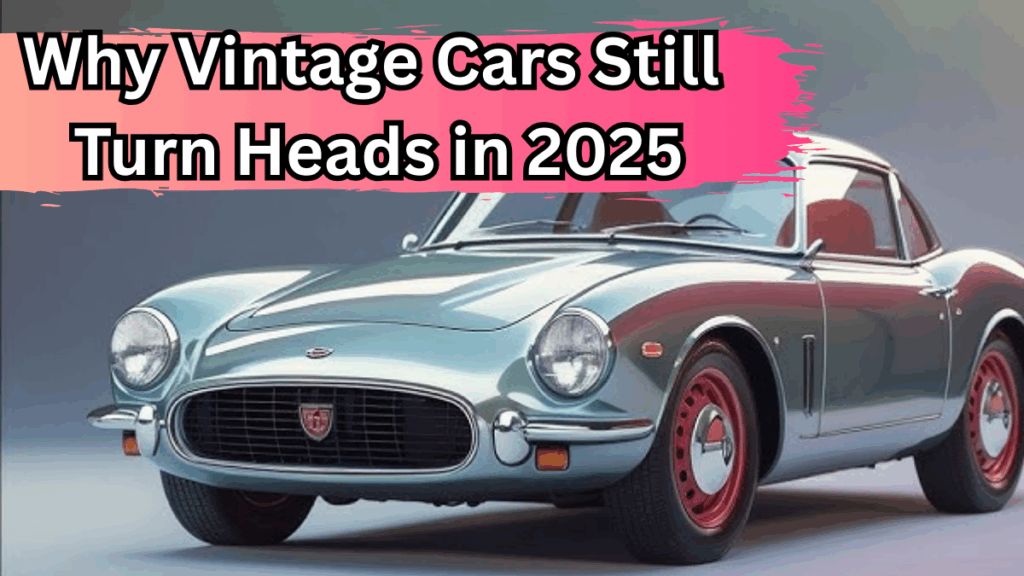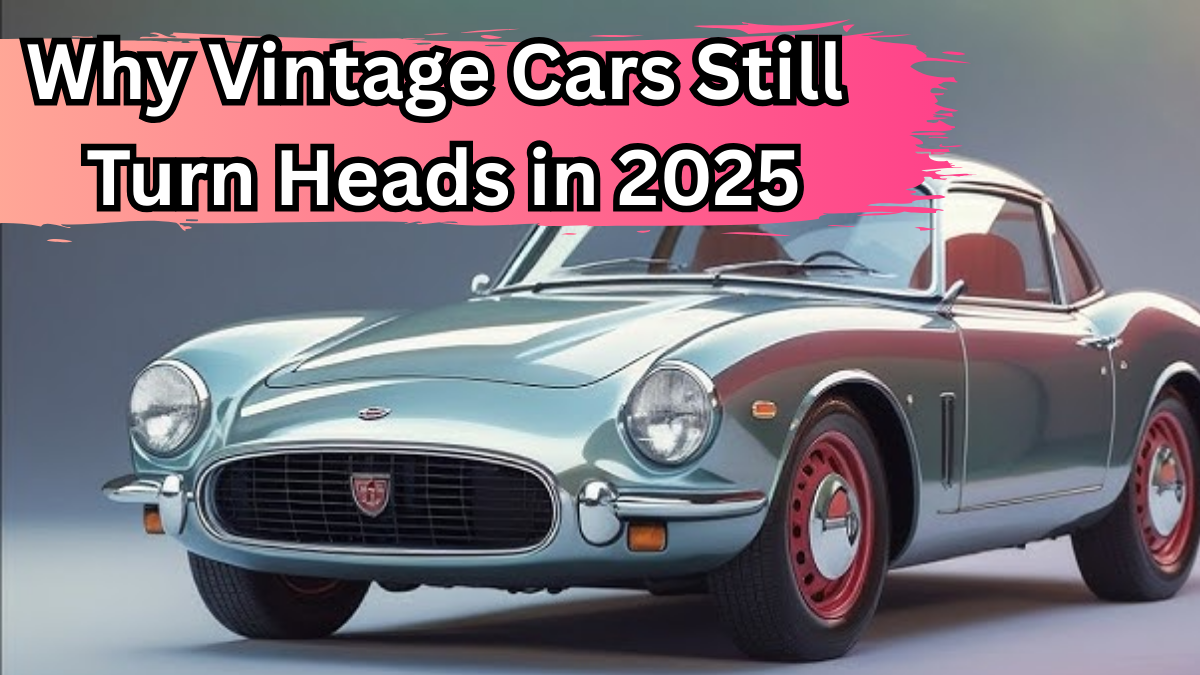In 2025, when electric vehicles dominate the roads and AI assists every turn, vintage cars continue to capture attention like nothing else. From the unmistakable rumble of a V8 engine to the sleek chrome finishes, there’s something irresistible about these timeless machines.
Let’s dive into what keeps the classic car appeal alive and why vintage cars still turn heads in 2025.

The Undeniable Allure of Classic Cars
Even in today’s world of futuristic technology, vintage cars have a magnetic charm. They don’t just drive—they tell stories.
Here’s why vintage cars still turn heads in 2025:
-
Timeless Design: Vintage cars are designed like art, with elegant curves and bold lines that stand apart from modern aesthetics.
-
Raw Driving Experience: No driver assist or infotainment distractions—just the pure joy of being in control.
-
Emotional Connection: Many people associate vintage cars with personal or family memories, making them emotionally powerful.
-
Exclusivity: Unlike mass-produced vehicles, vintage cars are rare treasures on the road.
The Power of Auto Nostalgia
There’s a reason people smile when they see a classic car on the street—it takes them back. This emotional response, known as auto nostalgia, plays a huge role in their enduring popularity.
For many, it’s a flashback to:
-
Childhood road trips
-
Parents’ first cars
-
Iconic movie scenes
-
Sunday drives in simpler times
In a fast-paced world, vintage cars offer a comforting sense of familiarity.
How Vintage Cars Stand Out in a Digital Age
Modern cars may offer convenience, but vintage cars offer character. Here’s how the two compare:
| Feature | Modern Cars | Vintage Cars |
|---|---|---|
| Design Aesthetic | Sleek, minimal | Bold, expressive |
| Driving Experience | Assisted, tech-heavy | Raw, manual, engaging |
| Availability | Mass-produced | Rare, collectible |
| Emotional Value | Low to moderate | High nostalgia factor |
| Customization | Software updates | Mechanical and artistic mods |
Why Younger Generations Are Getting Hooked
It’s not just baby boomers who appreciate vintage rides. Millennials and Gen Z are fueling the revival, and here’s why:
-
Desire for authenticity: Vintage cars feel real—every knob, gear, and pedal has purpose.
-
Love for storytelling: Owning a classic means owning a piece of history.
-
Search for individuality: Standing out in a world of uniform electric vehicles is a statement.
-
Social media influence: Classic cars are aesthetic gold for platforms like Instagram and TikTok.
Events and Communities Keeping the Spark Alive
Vintage car enthusiasm is far from dying—it’s thriving, thanks to dedicated communities and events that celebrate these machines.
Some ways the culture stays alive:
-
Classic Car Shows: Annual events draw collectors and enthusiasts from all over the world.
-
Online Communities: Forums, YouTube channels, and Facebook groups fuel knowledge-sharing and appreciation.
-
Restoration Businesses: Specialist shops keep these machines running and restored to their original glory.
-
Drive Clubs: Social gatherings and road trips celebrate the simple joy of driving a classic.
A Modern-Day Status Symbol
In 2025, a vintage car isn’t just a vehicle—it’s a conversation starter, a lifestyle choice, and a symbol of refined taste.
What makes it luxurious is not just the cost, but the curation. Unlike a flashy new sports car, a classic ride whispers elegance and heritage.
Owning one means you value:
-
Design over gadgets
-
History over trends
-
Passion over practicality
FAQs
What defines a vintage car?
A vintage car typically refers to a vehicle manufactured between 1919 and 1930. However, the term is often used broadly today to refer to classic cars that are 20 to 30 years old or older.
Why do vintage cars remain popular in 2025?
They remain popular due to their distinct aesthetics, emotional value, and the growing trend of auto nostalgia. Many also view them as timeless works of art on wheels.
Are vintage cars expensive to maintain?
Yes, maintenance can be more costly due to the scarcity of parts and specialist services. However, for many owners, the rewards outweigh the expenses.
Can vintage cars still be driven daily in 2025?
While they can be driven daily with proper care, most owners reserve them for special drives, events, and weekends to preserve their condition.
Final Thoughts
So, why vintage cars still turn heads in 2025? Because they bring together history, emotion, and aesthetic in one unforgettable package. These machines are not just about mobility—they’re about legacy, passion, and style that transcends generations.
Click here to learn more
